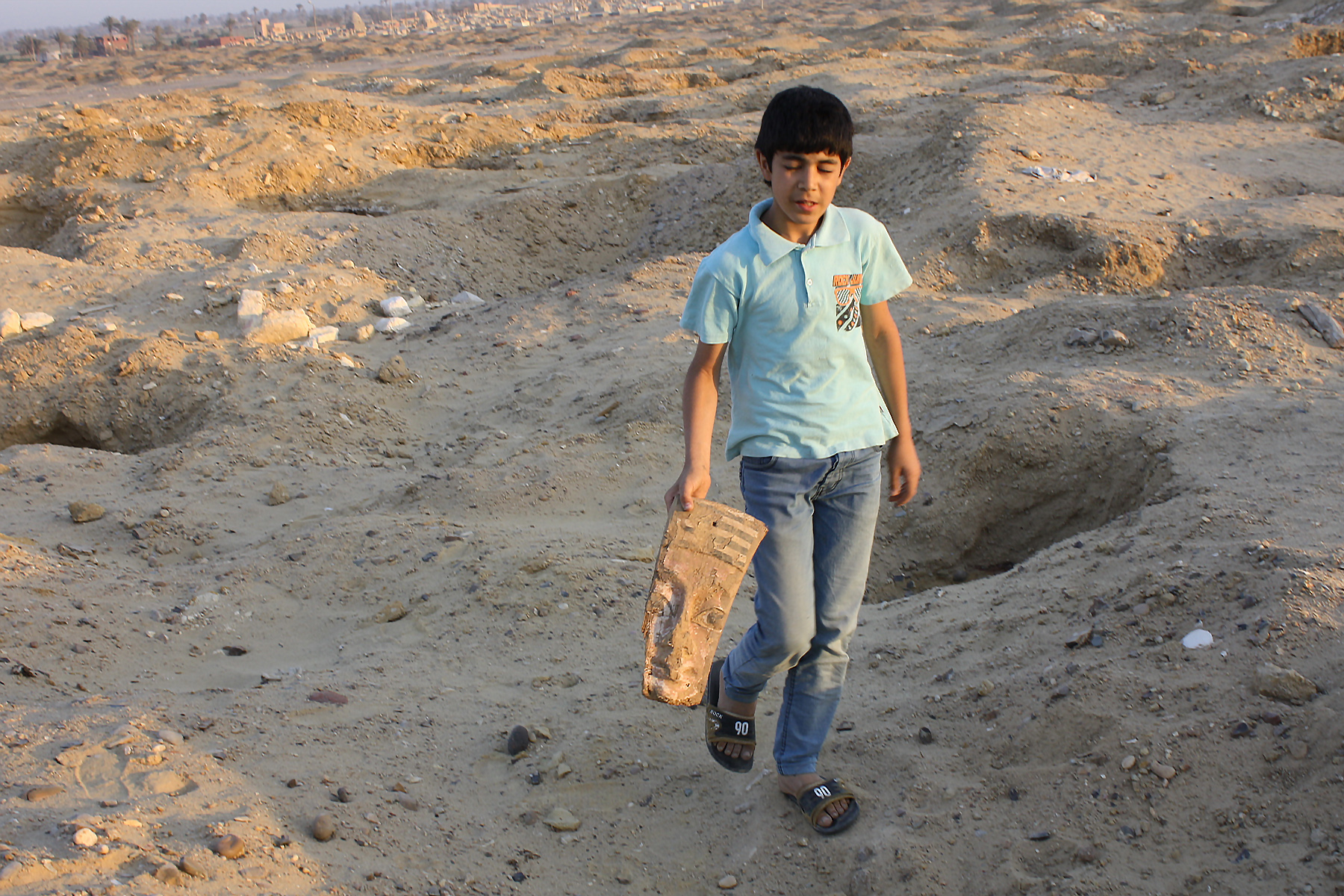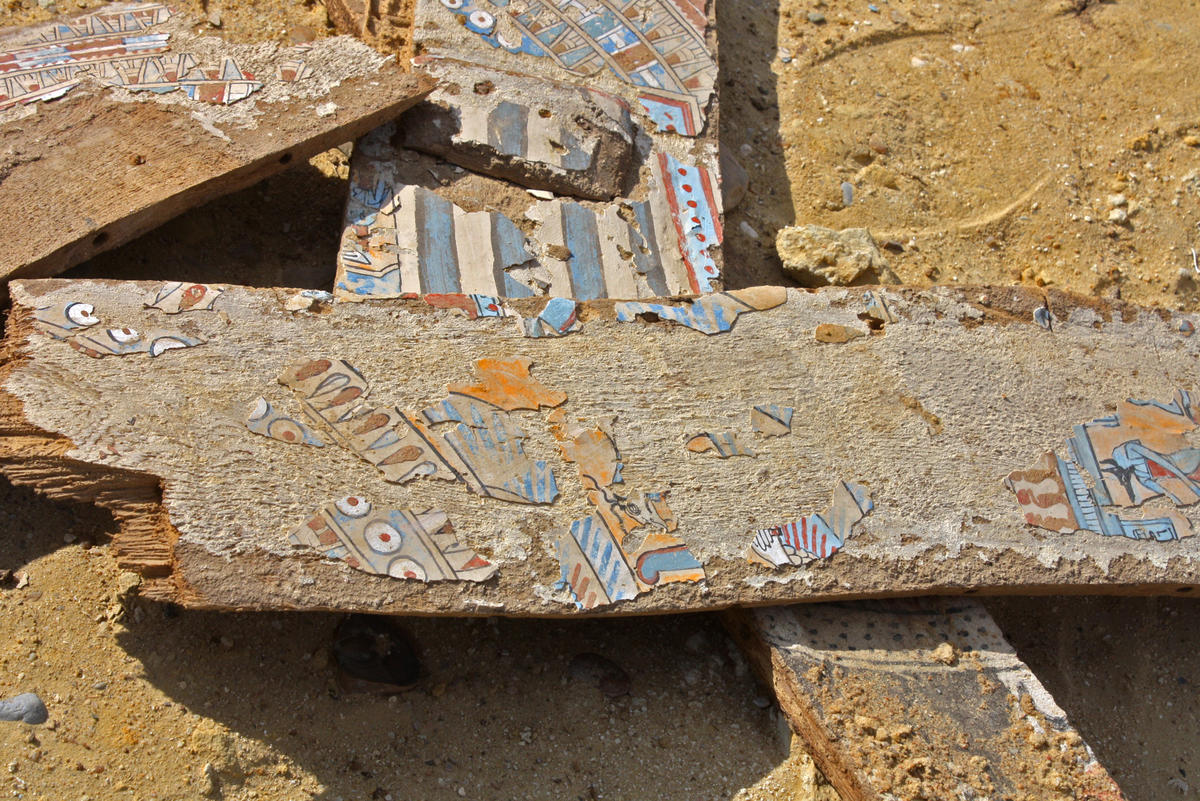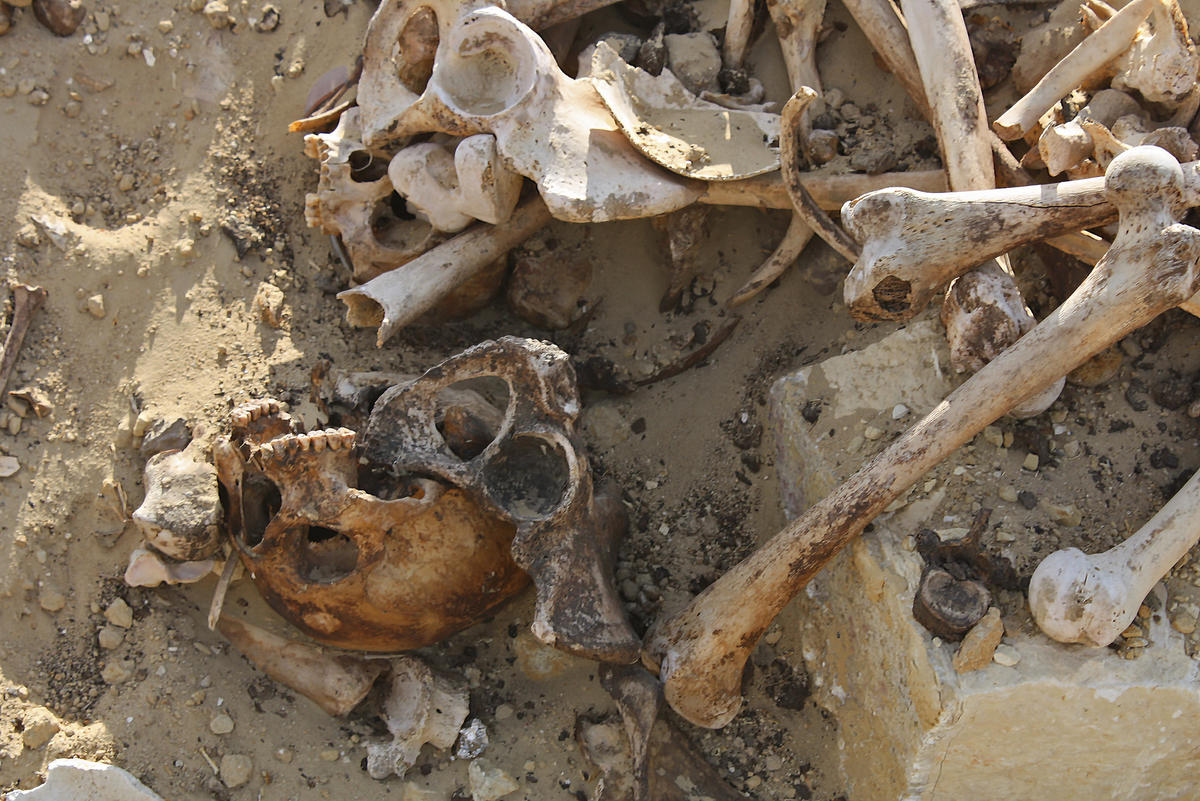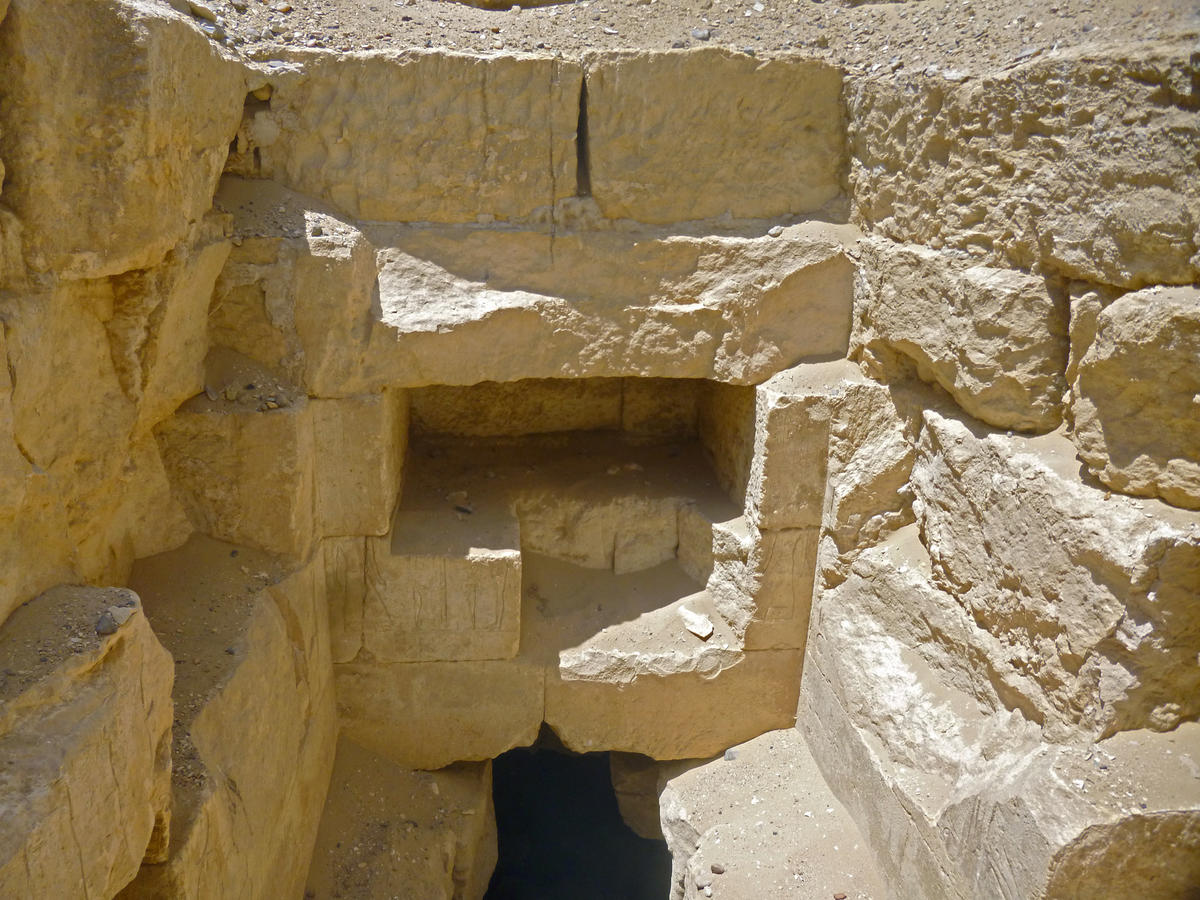https://www.wmf.org/project/abusir-el-malek
 Did You Know?
Did You Know?
Looting archaeological sites like Abusir el-Malek erases irreplaceable information about human history and cultural milestones.
A Closer Look
Abusir el-Malek
The
ancient settlement of Abusir el-Malek sat on a small rise in the
fertile floodplain between the Faiyum and the Nile. By 1500 B.C., it was
a prosperous settlement with many temples and a vast burial ground and
buildings stretching across a large area. Excavations in the early
twentieth century revealed burials centered on a cult honoring Osiris,
the Egyptian god of the afterlife. The earliest evidence of occupation
at the site dates from around 3000 B.C., with the majority of burials
beginning 1,500 years later. The cemetery continued to be used for
centuries, with the earlier shaft tombs being filled with later burials
from the Greek, Roman, and Islamic periods. Thousands of individuals
were buried at the site over hundreds of years of use.
Archaeological exploration of Abusir el-Malek in the early twentieth century resulted in many artifacts being placed in museums around the world, bringing attention to the importance of the site and its history. Site work continued in the 1970s, emphasizing again the valuable information being gained from documenting Abusir el-Malek. Following the Arab Spring in 2011, when policing archaeological sites became more difficult, there was a tremendous surge in looting of heritage sites in the region. Abusir el-Malek is one of the archaeological sites that has been particularly heavily looted. The continuing destruction of sites in search of saleable antiquities has resulted in the loss of scientific evidence, artifacts, and understanding of the stratigraphy of archaeological ruins at thousands of ancient sites like Abusir el-Malek. Sadly this situation is not unique in Egypt, or elsewhere in the world. Times of crisis—poverty, conflict, or political turmoil—stretch the protection of our past, often to breaking point.
Placing Abusir el-Malek on the 2016 World Monuments Watch cannot repair the damage to the site, but it can potentially raise awareness about looting and highlight efforts worldwide to stem the tide of illicit trafficking of archaeological objects. Developing alternative sources of income for local communities and incentives for protecting heritage sites, coupled with enforcement of local, national, and international cultural property laws, is a vital challenge.

Fragments of a Greco-Roman sarcophagus at Abusir el-Malek, 2013
Archaeological exploration of Abusir el-Malek in the early twentieth century resulted in many artifacts being placed in museums around the world, bringing attention to the importance of the site and its history. Site work continued in the 1970s, emphasizing again the valuable information being gained from documenting Abusir el-Malek. Following the Arab Spring in 2011, when policing archaeological sites became more difficult, there was a tremendous surge in looting of heritage sites in the region. Abusir el-Malek is one of the archaeological sites that has been particularly heavily looted. The continuing destruction of sites in search of saleable antiquities has resulted in the loss of scientific evidence, artifacts, and understanding of the stratigraphy of archaeological ruins at thousands of ancient sites like Abusir el-Malek. Sadly this situation is not unique in Egypt, or elsewhere in the world. Times of crisis—poverty, conflict, or political turmoil—stretch the protection of our past, often to breaking point.
Placing Abusir el-Malek on the 2016 World Monuments Watch cannot repair the damage to the site, but it can potentially raise awareness about looting and highlight efforts worldwide to stem the tide of illicit trafficking of archaeological objects. Developing alternative sources of income for local communities and incentives for protecting heritage sites, coupled with enforcement of local, national, and international cultural property laws, is a vital challenge.

Fragments of a Greco-Roman sarcophagus at Abusir el-Malek, 2013

Human remains found at Abusir el-Malek, 2013

Inscribed tombs at Abusir el-Malek have been hacked by looters, 2013
No comments:
Post a Comment